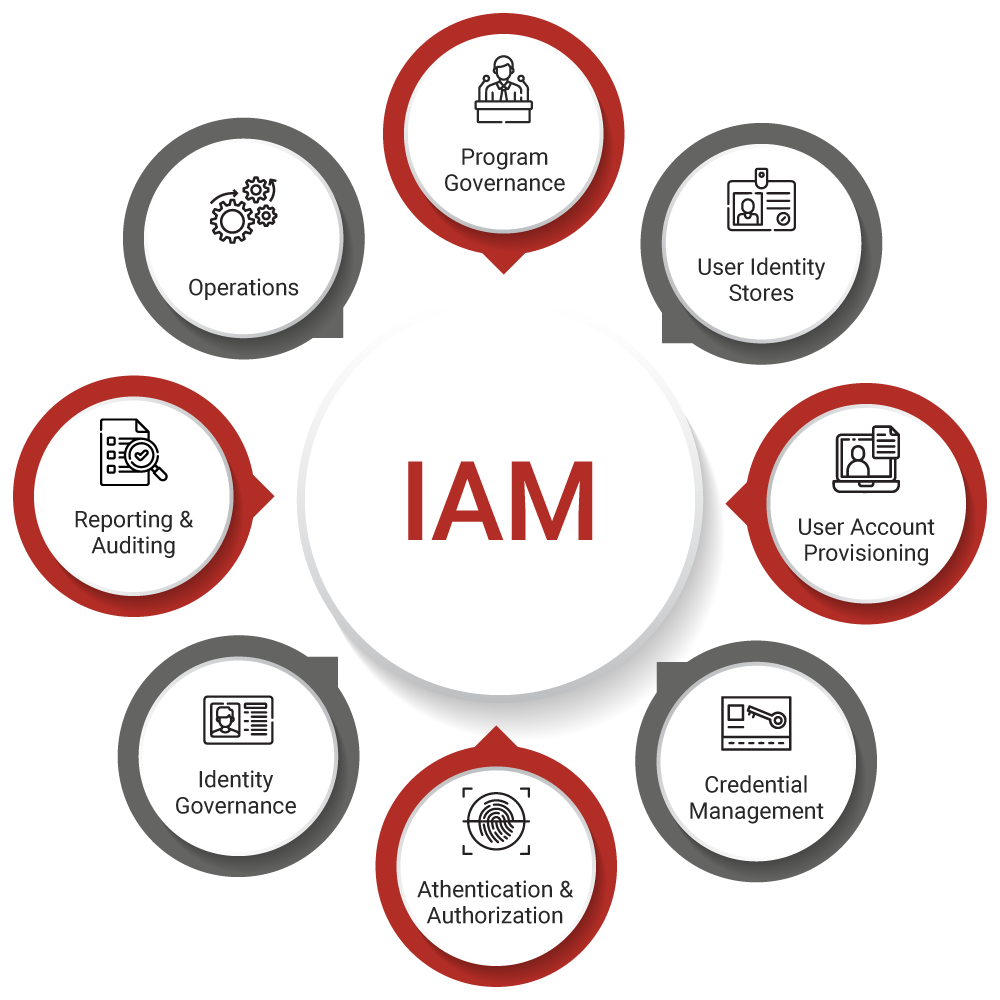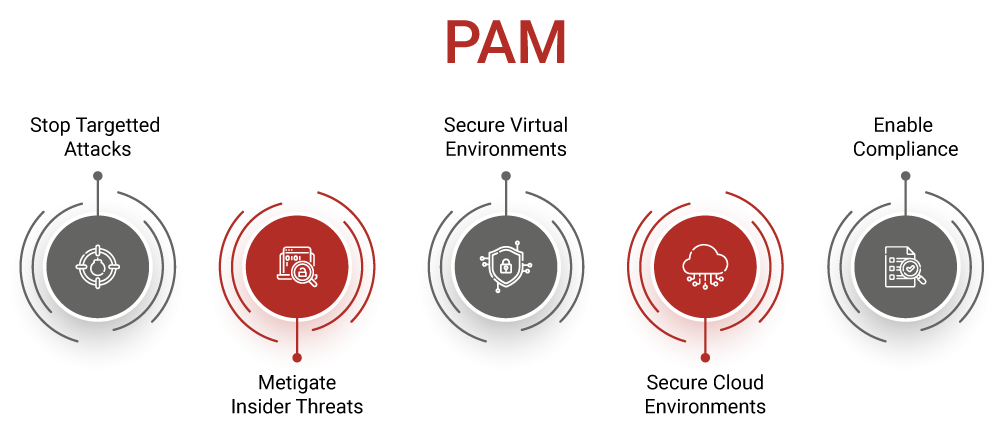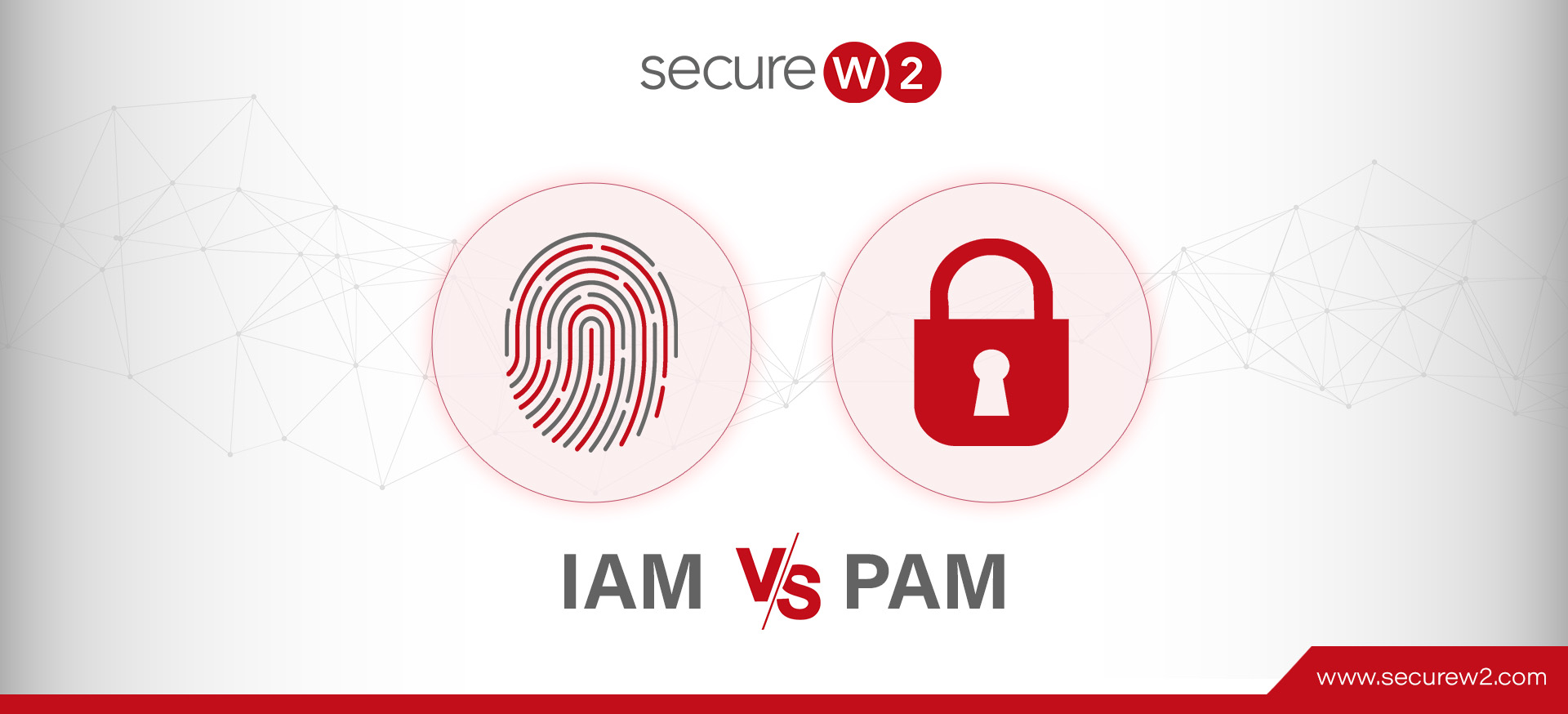The landscape of the corporate workplace changed dramatically post-pandemic when many companies were forced to go remote. This has brought to the forefront the question of how to manage the cybersecurity needs of companies with a dynamic structure where employees can access company infrastructure from anywhere in the world.
Identity Access Management (IAM) and Privileged Access Management (PAM) are solutions that companies are looking at as viable options for network security and network access management. Let’s look at what IAM & PAM are, what similarities they share, how they differ from one another, and the ways they help enhance network security.
IAM (Identity Access Management)

Identity Access Management (IAM) refers to the various protocols that are implemented for identifying, authenticating, and authorizing users in general with unique digital identities. Because IAM focuses on authenticating and authorizing every user, it dovetails nicely with the concept of Zero Trust.
IAM solutions are deployable both on-premise and via the cloud and use one or more combinations of authentication protocols like digital certificates, single sign-on (SSO), and multi-factor authentication (MFA). Some of the most widely used IAM solutions are the following:
- AAA (Accounting, Authorization, Authentication) servers, also known as RADIUS servers
- QAuth Protocol authenticating indirectly using the credentials of an approved third-party application
IAM Pros
IAM solutions work with both on-prem as well as cloud servers. Though there has been a general shift to the use of cloud servers because of the flexibility, there are still some companies that prefer to retain on-prem servers because they feel it gives them better control over physical servers. There are some organizations that like to continue using on-prem servers in conjunction with cloud servers as they don’t want to ditch these servers or are still in the process of migrating to a complete cloud infrastructure.
With companies moving toward hybrid and remote work, the number of unmanaged devices is going up. Handling the network security for these unmanaged devices becomes a tedious process if not managed well. A managed cloud RADIUS server allows companies to manage their network security by bringing the growing number of unmanaged devices under their umbrella, This flexibility helps companies to manage and control access with very little effort thus making it especially useful for the current dynamic workforce.
IAM solutions allow companies to automate authentication and access management. Life before IAM saw IT teams manually creating profiles for each user to align individual user accounts and adjust their authentication methods to provide user/role-based access. With IAM, the whole process of authentication and access management can be automated, thus eliminating the tedious task of manual access management. As an example, Cloud RADIUS can be configured to automatically revoke digital certificates from users who fail authentication for any reason.
IAM Cons
Though IAM is used widely, its vast array of features sometimes makes it complicated to implement effectively. IAM solutions work best when used with digital certificates together with a combination of single-sign-on (SSO) and multi-factor authentication (MFA). Using only one method can impact the efficiency of IAM as a network security solution. Because IAM works most optimally when multiple authentication types are used, implementing IAM effectively often requires your IT department to have varied expertise.
PAM (Privileged Access Management)

Privileged Access Management (PAM) is essentially a subcategory of IAM that focuses on managing a certain subset of users who need access to sensitive/privileged resources. For example, employees in the HR team or IT department need access to some sensitive information to effectively function in their role, which otherwise is not needed by all employees. With PAM, you can regulate the access level of users on the basis of the group or team that they belong to, thus limiting access to critical information to only the users who require it to function in their roles.
PAM Pros
PAM is designed to monitor and manage access to critical resources such as confidential employee information. Only the users that need access to the data to perform in their roles, like HR or system administrators, are allowed access to these resources.
Security protocols in PAM are very stringent. There are multiple layers of authentication protocols set up to not only grant access to a user but also to monitor any activity these users take, reporting and flagging the slightest anomaly. PAM allows real-time identity and access management which means user access can be granted or revoked dynamically in case of a breach.
PAM Cons
Role-based access management requires careful planning and mapping of levels of access for each department or group. Since the goal is to restrict access to sensitive resources, you’ll need to employ multiple authentication protocols, which requires lots of resources and time.
Utilizing PAM effectively also means needing to keep in mind all possible network vulnerabilities borne from user permissions. And the slightest lapse may have the potential to cause irreversible damage to a company. The quality of resources and strategy implemented to design these solutions are crucial determiners of their effectiveness.
IAM VS PAM
IAM and PAM are sometimes used interchangeably, and though they are related, they are still different from each other. IAM solutions are designed to manage and monitor the network security of an entire organization; whereas PAM manages access of specific users and machines that need special access to perform sensitive roles. Let’s see where these two technologies have similar functions and what features are unique to each protocol.
Similarities Between IAM & PAM
Role-based Access – Both solutions provide role-based access control, which is considered an essential component of network security. With IAM and PAM, instead of access to the entire network, users only have access to the company information that is needed to perform their roles.
Using two or more authentication protocols to verify a user or a machine before allowing access to the network is called multi-factor authentication (MFA). IAM & PAM both have the option to implement MFA. Along with credential-based and certificate-based authentication, you can enable protocols like biometrics, or OTP-based authentication. Passwordless mechanisms like QR codes, geolocation, IP address and even accessing user behavior to verify the authenticity of a user are some of the other popular authentication protocols that are used in MFA.
Seamless Monitoring/Better Network Visibility – Both solutions allow constant monitoring of end-user activity that helps identify and address security issues immediately and in real-time. IAM and PAM, therefore, improve network visibility.
Reporting – With IAM, companies can generate a comprehensive analytic report of user activity. PAM enables you to customize a report with detailed analytics. Almost every regulatory board requires some form of reporting, IAM & PAM help you become compliant with audit and reporting requirements for your regulatory boards.
Key Differences Between IAM & PAM
Though IAM and PAM solutions share their similarities, there are some major differences that make each unique in their utility and scope. Here are some of the differences that can be seen between the two solutions.
Scope
The main difference between IAM and PAM is the scope of their focus. IAM broadly looks at the organization as a whole, authenticating and authorizing users in general. Its ultimate goal is to ensure that only employees access any company resource.
PAM, in comparison, primarily focuses on restricting access to sensitive resources by defining a narrow subset of users allowed to access said resources. Rather than worry about authentication/authorization on a general scale, it seeks to ensure certain privileged users are able to access restricted resources – and only the restricted resources they need to perform their roles.
Authentication Protocol Stringency
Another difference between the two approaches is the stringency of the authentication protocols involved. Although IAM applies to far more users, its general focus means it doesn’t require the same degree of stringency as PAM does.
PAM’s goal of protecting the most sensitive resources means it needs to have extremely stringent authentication policies. Aside from authenticating and authorizing users, it must also look to provide some method of accounting. When critical resources are accessed by an authorized user, that user’s actions need to be recorded so any suspicious activity can be flagged and scrutinized.
Resources
IAM tends to require a combination of authentication methods, such as SSO, MFA, and digital certificates. While this calls for a much wider range of knowledge from your administrators, PAM still requires a steeper investment.
This is because PAM safeguards your organization’s most valuable assets. If your PAM policy is weak, the data being breached is critical.
SecureW2 IAM & PAM Solutions
Hybrid and remote work cultures are becoming more prevalent creating unique cybersecurity risks for companies. Employees now log in to company networks from multiple locations across the globe, often using unmanaged devices that leave the network vulnerable to multiple security threats and attacks. Company networks have become more vulnerable to cyber threats that are increasingly becoming more frequent. They need a comprehensive solution that is a combination of both the IAM system and the PAM solution.
Companies now have to apply multiple layers of security measures combining various protocols, to enhance their network security. But, setting these up can be complicated and often put a lot of stress on the IT department.
Our Managed Cloud PKI solutions use certificate-based 802.1X EAP-TLS authentication for WiFi and VPN. Our certificate templates can be customized for either role-based access control or attributes-based access control making it ideal to implement in both IAM and PAM environments. Certificates are considered the most secure for authenticating users as they help eliminate over-the-air attacks as well as enhance the user experience by doing away with the challenges with password management. Unmanaged devices too can now be easily secured with 802.1X certificates for better control and visibility over the network.
SecureW2’s Cloud RADIUS solutions work with all major SAML and LDAP Identity providers like Google, AD, Azure, and Okta making it very easy to integrate our solutions with your existing infrastructure. Our industry-first Dynamic Policy Engine natively supports cloud IDPs like Google, Okta, and Azure, which allows admins to implement runtime policy decisions at the time of authentication.
Comprehensive Identity & Access Management Solutions with SecureW2
Cyber attacks are increasingly becoming a sore point in network cryptography as they are the biggest threats to the business continuity of any organization. Cyber thefts are persistent in their attempt and they seem to get more brutal. It has become clear that we need a robust system of network security that is dynamic and comprehensive, one that applies different IAM and PAM protocols to customize a system of network security that is impenetrable and can scale to fit the needs of your organization’s continual growth. At SecureW2, our industry specialists provide you with both IAM and PAM solutions that fit you the best and help keep your network security safe and protected. Please click here to contact us.



